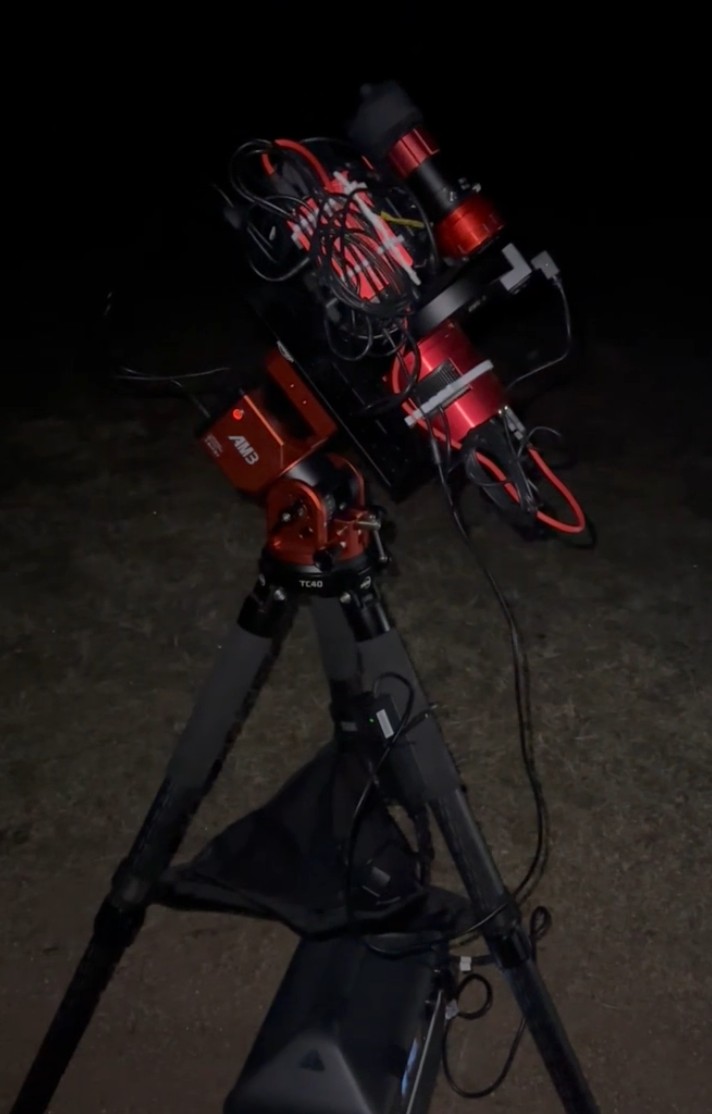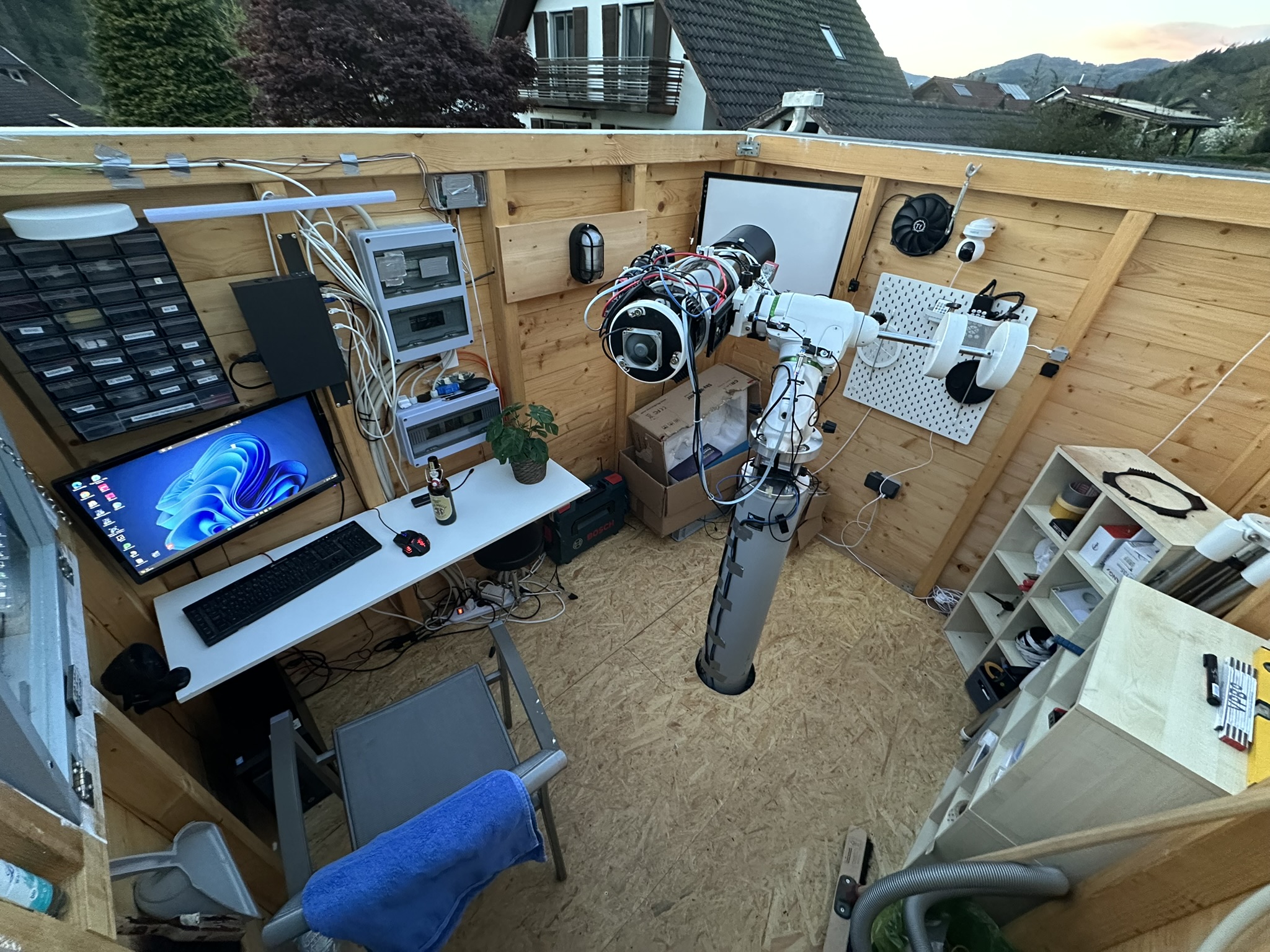My Equipment
The tools I use to capture the wonders of the night sky, from my lightweight portable rig to my dedicated observatory setup.
My Portable Astrophotography Rig

Travel Imaging Setup
This lightweight yet powerful setup allows me to capture incredible deep sky images from dark sky locations. The entire system fits nearly in a backpack and can be set up in minutes.
- Samyang 135mm f/2.0 ED UMC lens for wide-field imaging
- ZWO ASI2600MM Pro monochrome camera with Zwo EAF 36mm filter wheel
- ZWO AM3 mount with TC40 carbon fiber tripod
- ZWO 30mm mini guide scope with ASI678 MM guide camera
- Astronomik DeepSky LRGB and narrowband 6nm MaxFR filters (36mm)
Control & Power
The entire setup is controlled through the ZWO ASIAIR Plus system, allowing wireless operation via tablet or smartphone. Power is supplied by the Anker 555 portable power station, providing 1 - 2 nights of imaging capacity.
My Observatory Setup


Permanent Imaging System
My backyard observatory houses this dedicated imaging system, enabling remote operation and automation through full night sessions. I built it myself in June 2024 in the design of a roll-off roof garden shed, complete with a concrete pier and weather station. It doesn't win beauty competitions, but it works wonderfully and has character - I'm very happy with how it turned out. The setup is designed around automations and unattended operation, allowing me to capture stunning deep sky images while I sleep.
- Skywatcher 150PDS Newtonian with Backyard Universe aluminum spider vein
- ZWO ASI533MC Pro one-shot color camera with EAF focuser
- Sky-Watcher EQ6-R Pro mount
- Omegon 60mm guide scope with ASI120MM Mini guide camera
- Optolong UV/IR Cut and L-eXtreme dual-band filters
Automation & Control
The system is managed by a Mele Quieter3C mini PC running NINA and PHD2, with power distribution through the Pegasus Astro Powerbox Advanced that also handles dew control. The roof is fully automated through an ASCOM interface called RRCI (Rolling Roof Computer Interface), allowing software control of the observatory. Safety sensors monitor the telescope park position and detect if the roof is closed or opened, preventing equipment damage during automation.
Software Stack
Acquisition Software
NINA (Nighttime Imaging 'N' Astronomy)
Primary image acquisition software for my observatory setup, with advanced sequencing and equipment control
ZWO ASIAIR Plus
Complete control solution for my portable rig, with wireless operation via tablet
PHD2
Precision autoguiding with dithering between frames for my observatory setup
Green Swamp Server (GSS)
Direct mount control for the EQ6-R Pro via ASCOM.
Processing Software
PixInsight
Primary image processing platform for calibration, stacking, and advanced post-processing
Adobe Photoshop
Final touches, selective adjustments, and cosmetic corrections
Graxpert
Advanced noise reduction while preserving fine details in nebulosity